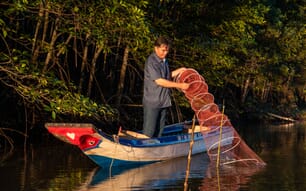Global shrimp production had been increasing with good growth in the 2000's.
However, this has been followed by declines of around 6 and 10 per cent in 2011-12 and 2012-13 respectively, then followed by a small increase again.
For 2013, shrimp production will by 15 per cent lower than in 2011, and currently we are 23 per cent off expectations a few years ago said Mr Anderson.
In his analysis, Mr Anderson highlighted the main shrimp producing countries for 2013 as SE Asia, China, India, the America's and the Middle East/ North Africa.
India has by far seen the biggest growth rate in recent years, whilst China has seen a significant decline.
Bangladesh, Brazil and Ecuador are all expecting production increases for 2013. Mexico, however, is experiencing a disappointing decline, most likely due to disease.
In terms of the outlook from a species perspective, p. vannamei shrimp accounts for around 70 per cent of global supply.
Looking into the reasons for decline, Mr Anderson stated that the main challenges to shrimp production have changed over the last few years.
Disease is now the biggest challenge, followed by quality of broodstock, production costs (feed), trade barriers and market prices.
In Asia, seed stock quality and environmental management are seen high on the list as challenges, where as, in Latin America, access to credit and international market prices are seen to be more important.
In conclusion, Mr Anderson stated that disease is causing the biggest risk to production and it is also undermining market development and investment. As a response, more investment is needed into disease management.




